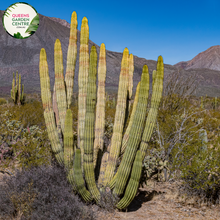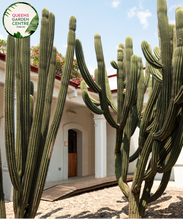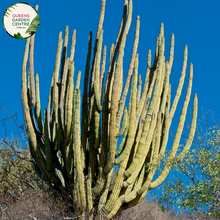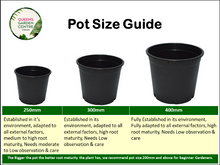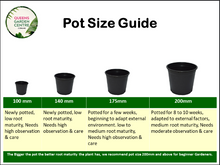Stenocereus Thurberi (syn. Lemaireocereus)
- Regular price
- $899.00 AUD
- Sale price
- $899.00 AUD
- Regular price
-
$1,100.00 AUD - Unit price
- /per
Sale
Sold out
Peek at Our Stock! 👀📊:
Our Heartfelt Guarantees! 💖🔒:
- Limited Offer ! Grab FREE SHIPPING on all 45ltr - 100ltr pots
- Out-Of-Stock in your state ? Contact Us to know interstate 🚚 shipping fee
- Online price wars? ⚔️ We'll match them all!
- Love our App? 📱 Checkout In-App deals!
- Quick bloom! ⏱️ 1-7 business days to your door.
- Happy plants, guaranteed! 🌱 7 days strong.
Note:
**Product photos are for illustration purpose only, Actual product may look different**
**Minimum order value is $175. (exludes shipping fee)**
Got A Question ? Call Now
- Limited Offer ! Grab FREE SHIPPING on all 45ltr - 100ltr pots
- Out-Of-Stock in your state ? Contact Us to know interstate 🚚 shipping fee
- Online price wars? ⚔️ We'll match them all!
- Love our App? 📱 Checkout In-App deals!
- Quick bloom! ⏱️ 1-7 business days to your door.
- Happy plants, guaranteed! 🌱 7 days strong.
Note:
**Product photos are for illustration purpose only, Actual product may look different**
**Minimum order value is $175. (exludes shipping fee)**
Tax included.
Shipping calculated at checkout.
Adding product to your cart
Stenocereus thurberi, also known as Organ Pipe Cactus, is a magnificent columnar cactus species native to the Sonoran Desert of North America. With its tall, multi-stemmed growth habit and ribbed structure, it creates a stunning silhouette in desert landscapes. This cactus species is characterized by its large, funnel-shaped white flowers that bloom nocturnally, attracting pollinators like bats and moths. Stenocereus thurberi thrives in hot, arid climates and well-draining soil, making it suitable for xeriscapes or desert gardens. Its striking appearance and adaptability make it a cherished addition to arid landscapes and botanical collections.
Use left/right arrows to navigate the slideshow or swipe left/right if using a mobile device
- Choosing a selection results in a full page refresh.
- Press the space key then arrow keys to make a selection.







